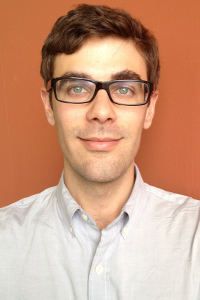Affiliation: University of Texas at Austin

D. Alex Walthall is Assistant Professor in the Department of Classics at the University of Texas at Austin, and he holds his degrees from Princeton University (Ph.D.) and the University of Virginia. His areas of specialization include the material culture of the ancient Mediterranean region, particularly the archaeology of ancient Sicily, numismatics, and Hellenistic monarchy. He currently serves as field director of the Contrada Agnese Project (CAP) at Morgantina, a long-term excavation and research project which investigates developments that occurred in the urban center of Morgantina between the 3rd and 1st centuries BCE. Professor Walthall is the AIA Metcalf Lecturer for 2020/2021.
The ancient city of Morgantina, located in eastern Sicily, has long held an important place at the intersection of archaeology and numismatics. The site itself was first identified in 1958 by Kenan Erim, who argued on the basis of coins found in the first years of the Princeton-led excavations that this formerly anonymous hilltop settlement was, in fact, the city of Morgantina. Years later, T.V. Buttrey would publish a pair of seminal articles that again drew on the site’s rich numismatic data to thoroughly establish that the introduction of the Roman denarius system occurred shortly before 211 BCE, a topic of long-standing debate. And, with its sweeping coverage of nearly ten thousand coins discovered in the course of excavations between 1955 and 1981, Morgantina Studies II: The Coins remains an essential resource for anyone interested in studying the numismatics of ancient Sicily. Recent excavations at the site have continued to underscore the value of studying ancient coins with respect to their archaeological context. In this paper, I share one such example, focusing on the coins found during excavations of the so-called House of the Two Mills.
Between 2014 and 2019, archaeologists working with the American Excavations of Morgantina: Contrada Agnese Project (AEM: CAP) unearthed the remains of a modestly-appointed house built and occupied during the city’s Hellenistic heyday. In antiquity, the house belonged to a bustling, mixed-used neighborhood, located at the western edge of the ancient urban center. The occupants of the house appear to have engaged in a variety of industrial activities, including the milling of grain and, possibly, the baking of bread, judging from the presence of two large rotary millstones and an oven inside the building. That money clearly exchanged hands at the house is evidenced by the purpose-built shop on the property, which opened directly onto one of the city’s main avenues. Among the many thousands of objects recovered in the course of the CAP excavations, more than 400 bronze and silver coins of Greek, Roman, and Punic mints were found within the house. From small change accidentally lost through casual exchange to coin hoards secreted away against walls and under floors, the coin finds from the House of the Two Mills offer an extraordinary glimpse into the role that coinage played in the daily lives of the ancient Morgantinoi.
I begin this talk with a brief overview of the AEM:CAP excavations and address how these recent investigations have advanced our appreciation for the dynamic character of domestic space in the ancient city. I next provide a summary of the numismatic finds from the House of the Two Mills, highlighting instances in which this new material contributes fresh perspectives on long-standing numismatic conversations. I go on to compare the numismatic assemblage from the House of the Two Mills with those from other buildings in the same quarter of the city as well as with the assemblages recovered from other houses at Morgantina. In doing so, I consider what these coins may reveal about wider patterns of monetary circulation on the island during the 3rdcentury BCE, a time of great political and economic upheaval for the cities of eastern Sicily. Finally, I address how the methods of digital and geospatial recording adopted by the CAP excavations have allowed for a more nuanced approach to interpreting coins in the archaeological record, and use this as an opportunity to suggest possible avenues for future collaboration between archaeologists and numismatists.
See D. Alex Walthall's work in the American Journal of Archaeology.